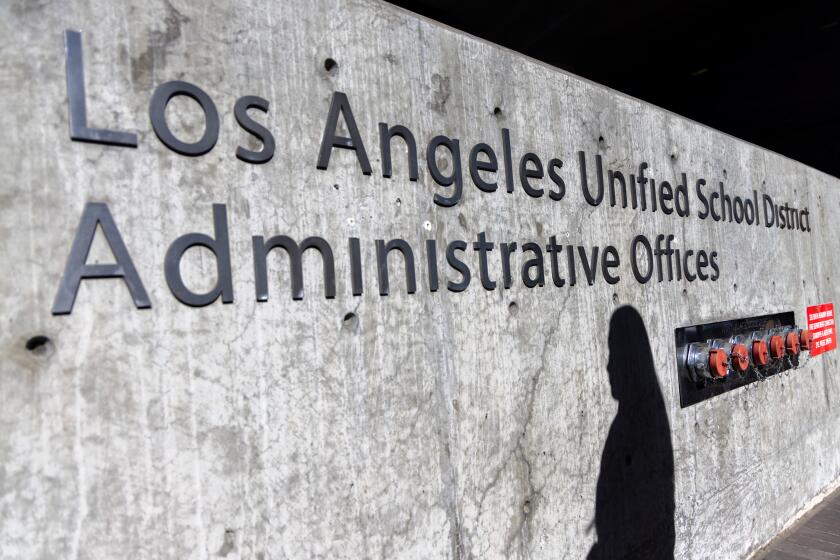United through a Berlin Wall artwork
She was born on the west side of the Berlin Wall. He was born on the east side.
But artists Jasmin Siddiqui and Falk Lehmann worked side-by-side for days to paint a poignant 12-foot-tall reminder of the Cold War on a chunk of the Berlin Wall that stands next to Wilshire Boulevard in Los Angeles.
The artwork is spray-painted on the “East Berlin side” of the concrete wall that for 28 years split families, blocked workers from their jobs and prevented Germans from freely traveling inside their divided country.
When the wall was torn down in 1989, most of the concrete used by East Germans for the 87-mile barrier was crushed and used to build roads. The 40-foot-long section of wall at 5900 Wilshire Blvd. is the largest remnant outside Germany.
Siddiqui, Lehmann and two other artists were chosen to paint the back side of the wall by its owner, the Culver City-based Wende Museum. It’s a 9-year-old organization that examines what it calls “parallels between the Cold War era and current events, human behavior, creative expression, and political, economic and social forces.”
“The west side of the wall had graffiti painted all over it,” said Siddiqui, 30, who hails from Heidelberg, Germany. “When the wall was up, we could never have worked on this together.”
Lehmann, 34, of Schmalkalden, Germany, said the bleak east side of the Berlin Wall was untouched because the area next to it was considered a death zone, where intruders risked being shot.
Fortunately, his family was spared the angst of living near the boundary between East and West Germany, Lehmann said.
“Our small town was far away from any border. I knew of the wall, of course, and we couldn’t travel to the West.”
When he first saw the relic, Lehmann said, it was exciting “to find a bit of your history so far away from home.”
“But I wondered, ‘Why are they allowing us to paint on something that’s historic?’ ”
Siddiqui said she told Lehmann the Wende Museum painting project “symbolizes the freedom” that the collapse of the Iron Curtain brought to their country.
Others participating in the project include Dean Stockton, a British multimedia street artist, and Marquez Lewis, who grew up in Los Angeles and honed his graffiti skills on freeway overpasses, walls and trains in the mid-1990s before becoming an accepted contemporary artist, said Justinian Jampol, the Wende Museum’s founder.
His organization’s wall remnant is in surprisingly good shape because it was used as part of a construction site’s sand pit retaining wall, said Jampol, 33, of Culver City.
The completed artwork will be unveiled Sunday at a fundraiser scheduled from 1 to 4 p.m. at the site of the wall. A donation of $50 is suggested, he said.
The wall’s artists will be at the event, titled “Surveillance Behind the Wall.” An exhibit of Cold War surveillance equipment from the Wende Museum collection will also be on display, Jampol said.
More to Read
Sign up for Essential California
The most important California stories and recommendations in your inbox every morning.
You may occasionally receive promotional content from the Los Angeles Times.











